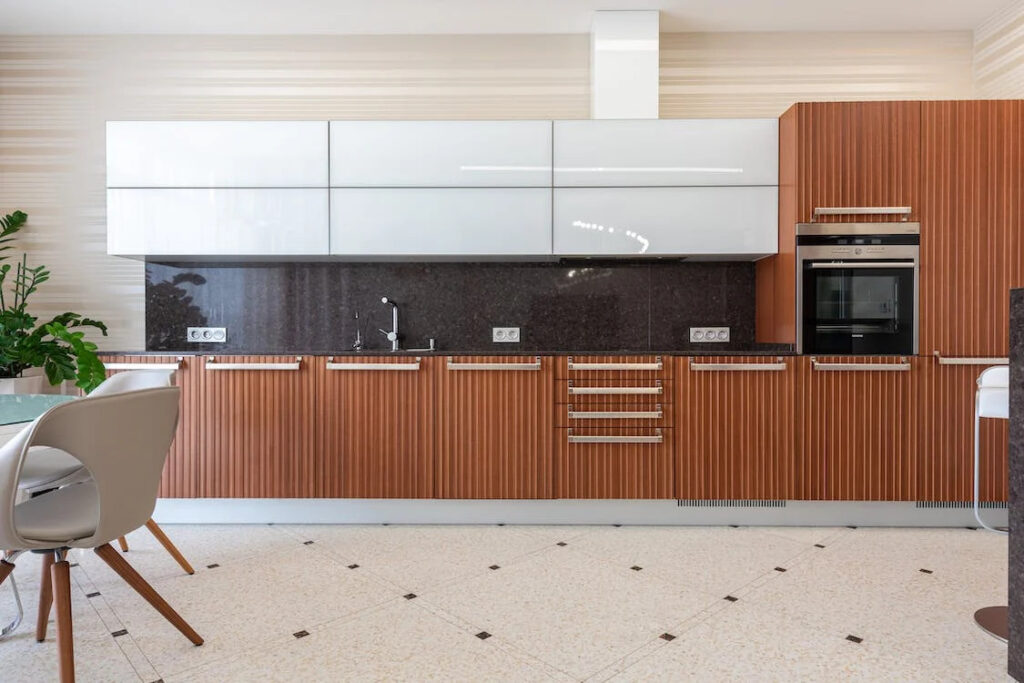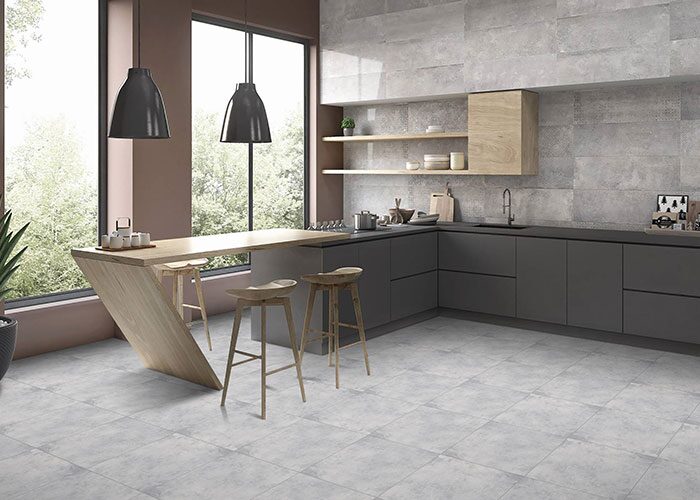A well-designed kitchen is the center of any house, and so is a smooth finish on cabinets for the kitchen. Installing kitchen base cabinets is one of the main parts that contribute to its functionality and attractiveness. Lower kitchen cabinets provide necessary storage space. Understanding how to install base cabinets is a useful skill that may save you money and time whether you’re a skillful DIYer or a new homeowner.
This detailed guide discusses the process of installing bottom cabinets step by step, assuring a professional and successful outcome. It will offer you the knowledge and confidence to easily undertake this job, from preparation, procedure, and finishing touches.
Table of Contents
Materials and Tools Required for Base Cabinets Installation
It is vital to remember that the particular materials and tools needed may vary depending on the kitchen design. It is advised to study the cabinet manufacturer’s instructions. Furthermore, make sure that all materials and tools are utilized safely and in accordance with the manufacturer’s instructions.
Materials Required for Base Cabinet Installation
The following are the most common materials you will require to install base cabinets.
- Base cabinets (purchased according to your kitchen layout)
- Cabinet screws or brackets
- Masking tape or pencil
- Shims (to level cabinets if necessary)
- Caulk or filler (for filling gaps between cabinets or between cabinets and walls)
- Drawer units (if included in your kitchen design)
- Hardware (hinges, handles, knobs, etc., for doors and drawers)
- Wall repair materials (if needed)
Tools Required for Base Cabinet Installation
The following are the most common tools you will need to install base cabinets.
- Tape measure
- Joint tape
- Level (both standard and laser level, if available)
- Screwdriver or drill
- Hammer
- Pencil or marker
- Masking tape
- Clamps (for holding cabinets in place during installation)
- Chalk line (for marking reference lines on the floor)
- Jigsaw (for cutting openings for plumbing or electrical access if necessary)
- Sander or sandpaper (for smoothing rough edges or surfaces)
- Putty knife (for applying caulk or filler)
- Gloves and safety goggles (for personal protection)
- Dust mask (when sanding or working with wall repair materials)
9 Steps for Base Cabinets Installation
Here are the 9 steps to follow for installing base cabinets:
1. Remove the Previous Cabinets
It is critical to remove old base cabinets from the area before installing new ones. Before clearing the cabinets, remove any hardware. Unscrew the cabinets from the walls using a screwdriver or drill and carefully remove them. B Also, make sure to fix and repair any holes or damage on the walls.
2. Prepare the Surface
Carefully prepare the surface before installing base cabinets to guarantee a smooth and secure installation. This phase entails inspecting the walls and making any required repairs. You can even conduct a thorough kitchen inspection to be on the safe side.
Begin by inspecting the walls for cracks, holes, or uneven surfaces. It is advised to fix and patch up any serious damage to the walls. Spackle or a wall repair compound can be used to fix small cracks. Apply the compound evenly with a putty knife, smoothing it out to produce a seamless surface. Allow the compound to cure as directed by the manufacturer, then sand it gently to get a smooth surface.
Consult a professional or follow specialized repair instructions for bigger or more complex wall repairs. This may entail removing and replacing damaged parts of the drywalls or using a joint compound and joint tape to fix bigger areas.
When the wall repairs are finished, the surface is smooth level base cabinets for installation. Remember that good surface preparation ensures that your cabinets have a solid and secure base, allowing for a successful and long-lasting installation.
Wearing safety goggles to protect your eyes from dust, debris, or other possible threats is essential when engaging in wall repair. Wearing gloves will also add a protection layer.
3. Determine the Floor’s Highest Points
Locate the highest places on the floor to ensure a level installation. Use a laser level or level to measure any high areas. Make a note of these regions for reference during the installation procedure.
4. Mark the Cabinet Unit Locations
Use a pencil or masking tape to measure the dimensions of base cabinets and mark their locations on the floor. Begin by highlighting the locations of the corner cabinets, which will serve as a starting point for the rest of the installation. Mark the positions of the remaining cabinets to ensure the correct space between each unit.
5. Start by Installing Corner Cabinet
Begin by installing the corner base cabinet. Using a level, ensure that the cabinet is leveled. Adjust the cabinet’s position as required, and then screw or bracket it to the wall.
If you don’t have a corner cabinet, you can start installation on either side.
6. Set Base Cabinets
Set the remaining base cabinets in their assigned locations. Make sure they are aligned with the marked placements on the floor. As you continue, check the level and plumb of each cabinet to make any required adjustments (if any). Screw or bracket each cabinet to the wall to make sure a secure installation.
7. Attach Base Cabinets
Attach the base cabinets together to form a uniform and stable structure. Connect adjacent cabinets at the front and rear with cabinet screws or brackets. Check whether cabinets are correctly aligned and flush at the front borders. This step will give the whole installation more strength and stability.
8. Install Cabinet Drawers and Doors
Attach the drawers and doors to the base cabinets to complete the installation. Attach hardware, hinges, and handles as per the manufacturer’s directions. Adjust the doors and drawers so that they open and close easily and are properly aligned with the cabinets around them.
9. Fine-Tune and Finish
After installation of the base cabinets, take time to fine-tune and complete the job. To ensure that the cabinet legs are level and equal, use shims or adjust them as needed. Seal any gaps between the cabinets or between cabinets and walls with caulk or filler to achieve a seamless look. Check the alignment and operation of all the doors and drawers. After that clean kitchen cabinets to remove any debris of leftover material.
7 Important Tips for Installing Base Cabinets Successfully

You can ensure a smooth and effective installation of kitchen base cabinets. Paying attention to detail can result in a functional and visually beautiful kitchen that fulfills your needs while increasing the overall worth of your property.
Following are the most important 7 tips for installing base cabinets successfully
1. Measure Carefully
Before beginning the installation procedure, take the time to measure the cabinet area correctly. Consider the kitchen and cabinet layout, cabinet size, and any unique design needs. Check measurements again to ensure an exact fit and adequate cabinet spacing.
2. Leveling is the Key
Take your time to ensure a level installation, as it will have a significant influence on the overall quality and aesthetic of your kitchen.
3. Clamps for Alignment
Clamps can help with appropriate alignment and guarantee that the cabinets are level. Using clamps to keep the cabinets in place while you fasten them to the wall might be useful throughout the installation procedure. This comes in handy, especially when installing larger or heavier cabinets.
4. Double-Check Cabinet Alignment
As you go through the installation, double-check the cabinet alignment. Check that the cabinets are vertically and horizontally aligned. Make any required adjustments to obtain a unified and aesthetically attractive design. Detail-oriented work at this stage will result in a professional-looking installation.
5. Maintain Cleanliness
Clear up any dirt or dust that builds throughout the installation procedure. This keeps it from interfering with the installation or causing damage to the cabinets. Clear away any sawdust, packing materials, or equipment to keep your workstation clean and organized.
6. Follow the Manufacturer’s Instructions
To guarantee a successful installation, read and follow these instructions. Manufacturer specifications may include particular hardware, tool, and method requirements, so keep these in mind during installation.
7. Test Drawers and Doors
After putting in the bottom kitchen cabinets and fastening the drawers and doors, test their operation. To guarantee smooth functioning, open and close each drawer and door. Adjust as needed to maintain correct alignment and clearance. This step ensures that your cabinets look good and perform correctly.
Liven Up Your Kitchen with Base Cabinets
Installing base cabinets in your kitchen is a rewarding task that can completely improve the appearance and functioning of your space. You can obtain professional and visually pleasing results by following this step-by-step instruction on how to install kitchen base cabinets. Take your time, measure carefully, and make sure each cabinet is level and secure. When installed properly, the base cabinets will create a firm foundation for your kitchen design, providing enough storage and boosting the overall aesthetic of your room.
Are you ready to transform your kitchen with base cabinet installation? Begin planning your project right now and put the knowledge you’ve received from this tutorial to use.





